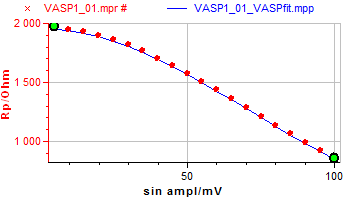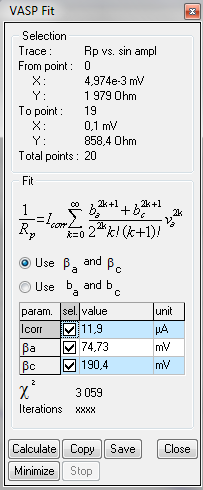Electrochemical characterisation of a corrosion system by Impedance spectroscopy
Latest updated: November 22, 2024Electrochemical impedance spectroscopy (EIS) is a powerful analytical method used to investigate the electrochemical properties of a wide range of electrochemical systems, especially for corrosion and applications for protection against corrosion. Impedance measurements are fast and non-destructive, as the corrosion system undergoes small AC amplitude excitations. Indeed, the measurements are performed at the steady state and have to comply with certain conditions in order to be valid (linearity, stationarity & causality).
EIS allows the differentiation of physical and the chemical processes occurring during corrosion. The modeling of the impedance data with equivalent circuits allows a quantification of the kinetic and diffusion/passivation/adsorption processes involved in the corrosion at the interface material/electrolytes. The principal corrosion parameters obtained by EIS techniques are corrosion current and therefore, corrosion rate. Two special techniques VASP and CASP based on impedance spectroscopy measurement have been developed for a fast and accurate determination of corrosion rate and Tafel parameters (ba, bc). These kinetic parameters are automatically computed and displayed by EC-Lab software (AN#36 and AN#37).


Impedance techniques are compatible with a wide range of corrosion systems and provide an accurate estimation of the corrosion rate of these systems, even for those undergoing mass transport limitation or an ohmic drop over the solution. For the latest systems, an inevitable underestimation of the corrosion rate is observed with DC techniques. For such corrosion systems an Ohmic drop compensation is needed before measurement using a DC technique.
Read More …
Application Notes
AN#36: VASP An innovative and exclusive technique for corrosion monitoring
AN#37: CASP: a new method for the determination of corrosion parameters
AN#48: Inaccuracy of the corrosion current determination in presence of an ohmic drop: EC-Lab® solutions




